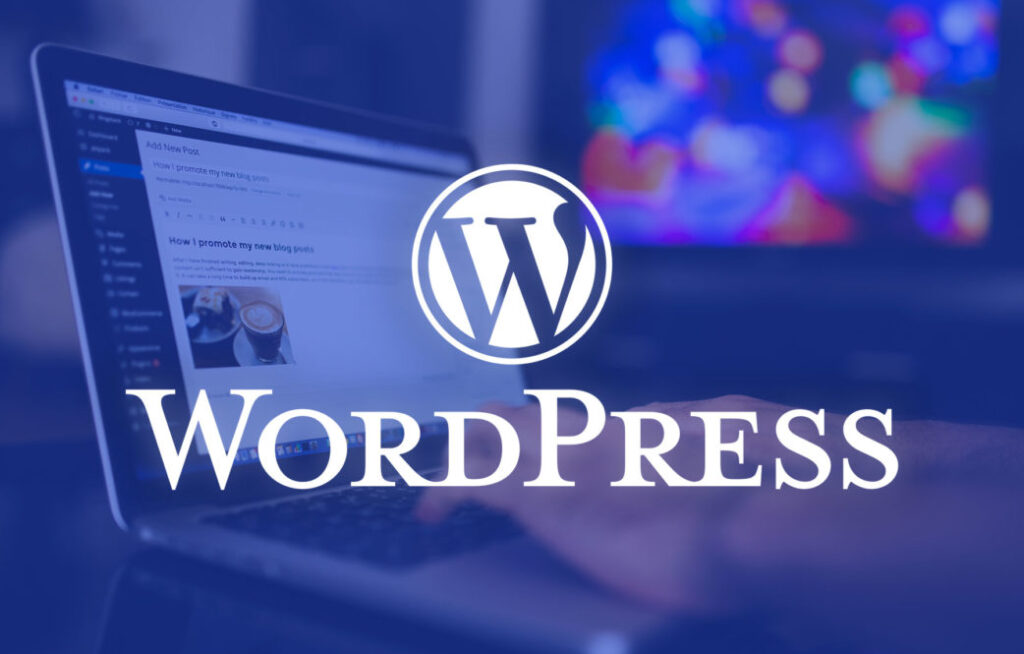The start of a brand-new decade is quickly approaching. In the year 2020, customers will be looking for your company online.
A website is necessary to gain credibility, give customers access to information about your business around the clock, and save time by anticipating and answering frequently asked questions.
Creating a website or online shop is simpler than ever before. You don’t have to be a whiz kid with computers to try doing it yourself with today’s tools. You can get your website up and running in no time with WordPress, a popular Content Management System (CMS) that currently powers 34 per cent of all sites on the Internet.
Learn everything you need to know to create a WordPress site from scratch here!
What is WordPress?
WordPress is a content management system that can be used to create and administer a website. You can easily manage and distribute your content with the help of this tool. It’s the backbone of your site, where you’ll install any plugins that alter the look and feel of your site’s interface. Your website can be tailored to your specific requirements and your target audience.
WordPress is a content management system (CMS) that gives you more freedom and control over your site and content than a What You See Is What You Get (WYSIWYG) website builder. Since WYSIWYG website builders are so intuitive, you may be tempted to use one.
Their functionality is often restricted, and they force you to use their hosting services. WordPress lets you easily and frequently update your site’s look, text, and functionality.
Why is a WordPress Website Suitable for SMBs?
- WordPress Has a Simple Interface.
WordPress’s user-friendly interface allows anyone to set up a website. Many entrepreneurs can easily acquire the knowledge needed to construct a website.
- WordPress Users Are Always Willing to Assist
Since WordPress is so widely used, there will always be a supply of information to help you make your site exactly what you want. In addition, small and medium-sized businesses have access to a large pool of designers for help with website development and maintenance.
- It’s flexible enough to meet your individual needs
When using WordPress, you have complete freedom and control over the development and maintenance of your site. WordPress allows you to build from a basic foundation, adding features and customizations. After that, your presence could grow substantially in size and functionality to become a true force in the industry.
Getting Started with WordPress
WordPress has a steep learning curve, but there’s no need to worry about that or feel overwhelmed by the options available. WordPress’s low barrier to entry helps keep costs down. If you already have a file hosting plan, nothing stops you from using this user-friendly programme.
- WordPress has a simple setup process
WordPress is open-source software that can be downloaded for free and installed on a web server. Downloading WordPress is as simple as downloading a document or image and uploading it to your inbox or social media account. It’s typically even simpler.
While WordPress can be downloaded from WordPress.org, many hosting packages include one-click WordPress installation. If you go with a managed WordPress hosting service, the platform will already be set up for you.
- Locate a WordPress-compatible web host
It is locating a plan that meets your needs for hosting flexibility and WordPress optimization. While most shared hosting plans are compatible with WordPress, you’ll get the best results by searching specifically for WordPress hosting.
WordPress-optimized hosting plans are created to make installing and setting up the content management system as simple as possible. These bundles include extra tools and products to improve and secure your website.
- Create a website
Selecting a WordPress hosting plan is the first step in getting your website up and running.
You should start by picking a catchy domain name. To reach your site, online visitors type domain names or email addresses into their browsers. Your domain name may be included in your web hosting package, or you can purchase it separately from your web host.
The installation process must be finalized next. Instructions on installing WordPress, which typically involve downloading and uploading the software or using a speedy installation method within your account, will be included in your selected hosting package.
Again, if you use a managed WordPress hosting account, you won’t have to worry about installing the software. When you first visit your domain after installing and activating WordPress, you will see a temporary installation page.
Choosing a theme, or web design template, is the next step. It’s a collection of premade-premade design templates for the WordPress content management system. Once you set up your theme, you can modify it by installing plugins. After establishing your website, you can begin developing it with your content.
- Making and Maintaining a WordPress Site
A simple installation tool is typically included in hosting packages. With a managed WordPress hosting plan, the platform is set up for you. After WordPress is set up, a control panel will become accessible.
Here, you can build and modify websites from the ground up. Everything you need to write articles, organize your site, and promote them is here.
- Picking the Right WordPress Template
WordPress provides a vast library of themes, many of which are free or very cheap. Premium WordPress themes are within reach for small businesses, and the time and energy they save are well worth the small additional cost.
Select a template that closely resembles the final product you’re hoping to achieve. Once it’s set up, you must upload photos and text to spread the word about your business. As website builders, many premium themes are extremely useful.
You can significantly change your site’s appearance without hiring a developer. They feature a collection of premade-premade templates that can be customized with a few clicks or by dragging and dropping in a visual editor.
General Tips and Tricks for WordPress
Take your time, dive into the builder’s features, and learn its capabilities; this is the best advice for starting with WordPress.
Try New Things Without Guilt
Get some experience by making a few pages and arranging the sitemap. Then, decide which plugins are essential for achieving your goals and install only those. You should be aware that installing too many plugins will speed up your site.
When You Need It, Help Is Here
The worldwide network of WordPress users is one of its greatest assets. A wealth of resources is available, including extensive documentation and active online communities of people using this tool and eager to share their knowledge and help you overcome any obstacles you encounter.
You can save time and frustration by using a WordPress hosting service offering top-notch customer support.
Make Sure Your Site Is Safe
WordPress site security should never be taken for granted. This is the single greatest threat to small and medium-sized businesses.
From a safety standpoint, you should check to see that everything is up to date. It’s more common than you might think for hackers to take down a website and cause damage to a business. To address security issues, WordPress releases updates regularly.
Keeping your website secure can be time-consuming, as more than one patch is typically released monthly. WordPress update’s themes and plugins and ensures you’re using the latest version.
Conclusion
Creating a site for your small business using WordPress is simpler than ever. Creating a WordPress site requires familiarity with common web tools and a smartphone.
Getting started requires only bravery, endurance, and minimal investment. While there is a learning curve, it’s less steep than you might fear.
You can quickly build and launch your WordPress website using the global WordPress community and a hosting company supporting SMBs.





